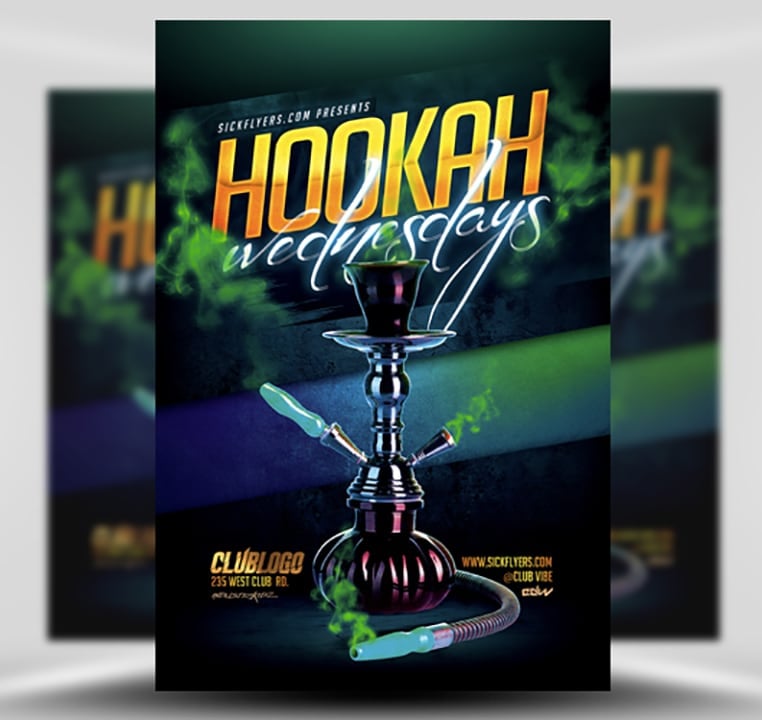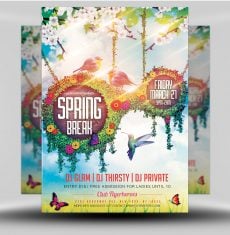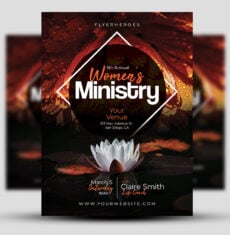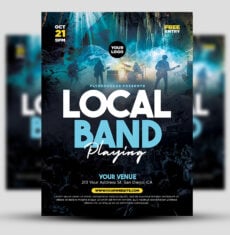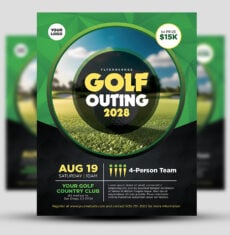Hookah Wednesday Flyer Template
The contrasting golden-yellow title text on a deep blueish-green background makes the headline of this flyer truly unmissable.
See also: All Hookah Lounge Flyer Templates for Photoshop
With just a few lines of text to edit and a large 3D hookah pipe taking proud centre-stage, you’ll produce a professional-quality Hookah Flyer Template for your club or venue in just a matter of minutes.
View related Hookah Flyer Templates:
The text and image areas in this flyer template are fully editable and very easy to customize. Simply edit with Photoshop and you are good to go!
What fonts do I need for this template?
General information:
Hookah Wednesday Flyer Template is a premium Photoshop PSD flyer / poster template designed by FlyerHeroes to be used with Photoshop CS4 and higher.
Once you have purchased this flyer template, you are free to make any customisations and modifications you wish.
You are also granted an Unlimited Use and 100% Royalty Free License meaning you can use this product as many times as you wish for as many clients as you wish. You are free to use this product in both personal and commercial work.
You can read more on our File Licenses here and our File Requirements here.
Please note, stock models / photographs of people are used for demonstration purposes only and are not included in the final download. We do however include a blank placeholder layer to make using your own stock photos as easy as possible.
If you have any further questions, please feel free to direct your questions to FlyerHeroes Support.

